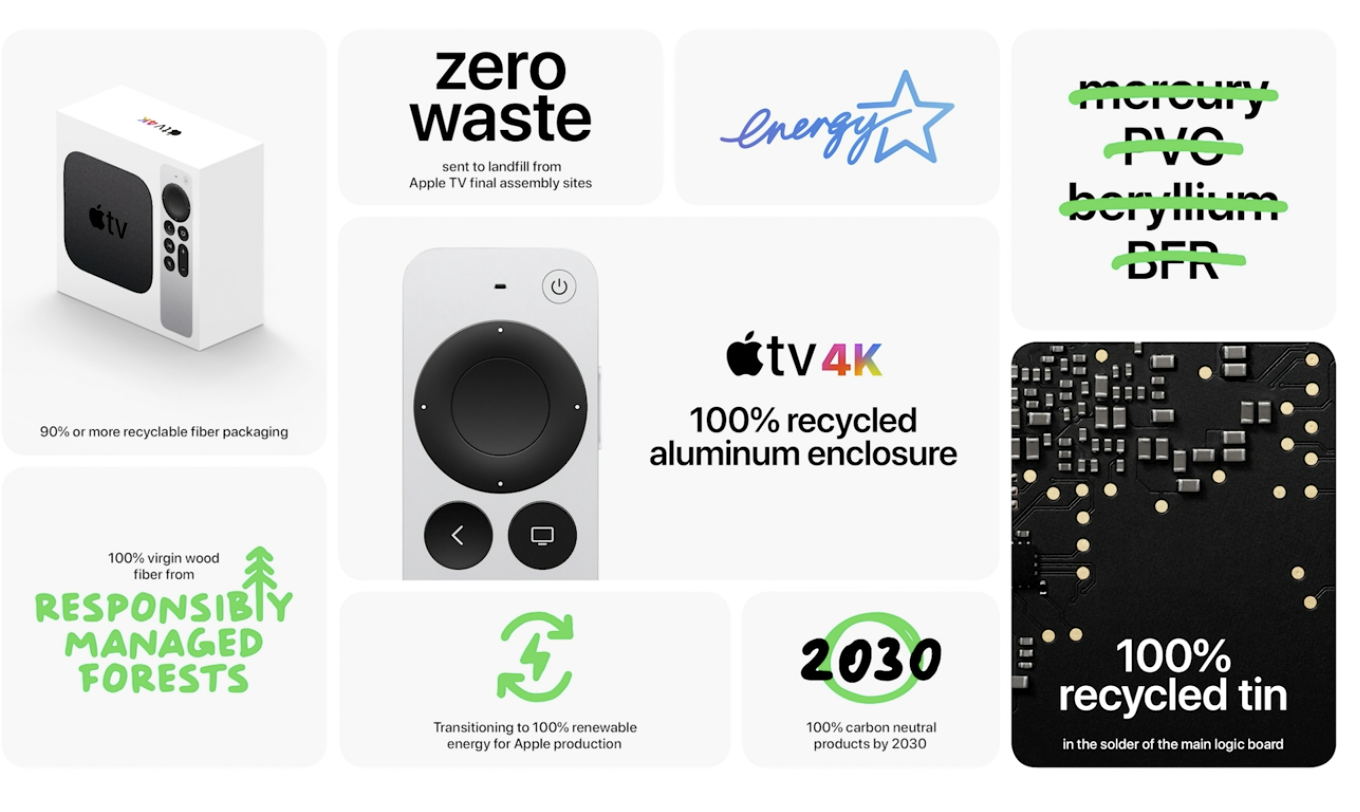The iFixit team gathered virtually for the Apple keynote this morning, alive with our usual mixture of curiosity and tempered expectations. Rumors abounded and boy did Apple deliver. Sneak a peek at our notes to get to know the winners, losers, and big questions. Here are our top five takeaways:
1. What is up with that “iMac Air?”

The new iMac is the bizarre cross between a base-model MacBook and an iPad, with none of the portability, potency, and as far as we can tell, even less fixability. Apple wants the computer to disappear—hence the focus on iPad perhaps—but then why bother making an ultra-thin desktop computer? So you can hide plants behind it on your desk? So you can push it too far away for the screen size to be a benefit? Honestly, please tell me what you plan to do with this product. There must be market research to support this? iFixit Product Engineer Andrew Goldheart says, “This was made for my dad. All he wants is to browse the web on a big screen.”
A desktop with soldered RAM and storage, tiny fans, and an off-loaded power supply—at least that’s replaceable—is certainly a choice. For a company struggling to get back to its Mac roots, it’s definitely not the path we’d choose. If nothing else, this product line does seem to imply that the iMac Pro will be sticking around in some form or another.
2. Apple sells magic, because you’re not smart enough for tech.
A goofy Mission Impossible sequence isn’t enough for us to believe the iPad is a “magical sheet of glass.” Even if Tim Cook is able to swap M1 processors with some tweezers and the twist of a screwdriver. iPad is a really cool piece of tech, but it still has a screen, a battery, some silicon. It’s not a mystery. It’s also not very fixable.
Apple brags about how gentle their manufacturing is on the environment, but the true magic is in keeping the device you already have going. Recycled can never compete with repaired in carbon footprint reduction. But part of Apple’s greenwashing campaign is convincing its customers that they are too stupid to fix their own tech. Apple has fought unceasingly to convince its customers that hardware isn’t just hardware—it’s magic, so don’t touch. Don’t let them win this round of psychological warfare. Tech isn’t magic. It’s cool, and costly, and tricky, but should always, always be fixable. Let’s hope Apple’s next iPad is even half as fixable as the fantasy version Tim souped up in the promo video—socketed processors and no glue? Sign us up!
3. Touch ID is in peripherals now—so why are parts logic board-locked again?
Apple announced a new Magic Keyboard with integrated Touch ID. We’ll skip the keyboard jokes we’re sure they’ve figured that out by now. We’re more interested in that built-in “secure processor” that communicates wirelessly with the M1’s secure enclave. Security concerns have long been the main justification for Apple’s frustrating habit of locking or “pairing” original components such that they stop working if replaced. So, what happens when you have a choice of keyboards that can pair with, and unlock, your iMac with that same tech and data? Those repair roadblocks are seeming less like a security issue, and more a control issue. Repair is for everyone, and Apple shouldn’t be allowed an unfettered monopoly.
4. Siri Remote still doesn’t have a replaceable battery.

A new revamp of the universally reviled (and replaced) Siri remote honestly had our engineers dancing in their seats. We love the accessibility of the new buttons, and definitely like the new power button. But having a remote with a built-in battery continues to push our buttons. We always argue that repairability doesn’t have to come at the expense of slim design, but in this case, what’s the harm in making this remote less-losable? I personally have my remote in a giant silicone sleeve so I can stop dropping it into my couch. It’s a little embarrassing that Apple cheers remote features such as “comes in a recycled paper box”, when the biggest impact they could make would be replaceable batteries.
5. AirTag batteries are user-replaceable!

And finally, let’s end on a sweeter note: Apple finally trusts you to replace a battery! Its long-rumored AirTags are here, and while they didn’t make much noise about it during the keynote, the Tags do indeed have user-replaceable batteries. Buried in the product page under battery performance is this gem: “Your iPhone lets you know when itʼs time to pop in a new one.” Much rejoicing was had on the iFixit Slack, I can tell you. Funny that these 29-dollar, inch-and-a-quarter tags have a replaceable battery when the four-times-bigger Siri remote just can’t seem to find the room…
Despite our misgivings, we’re itching to start tearing into these new products. What should we dive into first? And what spicy takes are we missing? Let us—or Apple—know in the comments!




14 Комментариев
They care about the environment, sure, but they care about profit more…
Enrico - Ответить
Looking at the product pictures of the Apple TV Remote, I did notice two screws next to the Lightning connector, where you should be able to open the remote. It looks wide enough to slide a circuit board and/or a battery in and out. Perhaps the rechargeable battery inside will be replaceable in some way, without destroying the entire remote.
For a close-up, see https://i.imgur.com/qMWErAf.png
Rob - Ответить
All I could think about is how did Tim open those devices so easily? Wouldn’t have been cool if he had a pentalobe screwdriver with the iFixit Blue handle?
BKNJ - Ответить
When will they start making stuff in the USA? My 15” late 2013 2.6 macbook pro is still my goto mac and probably will last forever… Fast enough, thin enough, slick enough and mostly fixable. Plus, the Apple logo lights up to let you know its alive! I refuse to buy anything where the ram, disk et al is soldered to a board unless its built into an airplane or submarine which might justify the engineering.
Ross Elkins - Ответить
Wow for a company that makes money off people that like and buy Apple products this sure seems like a lot of bashing not only to Apple but to their customers. Definitely going to rethink where I buy my parts from.
X12335 - Ответить